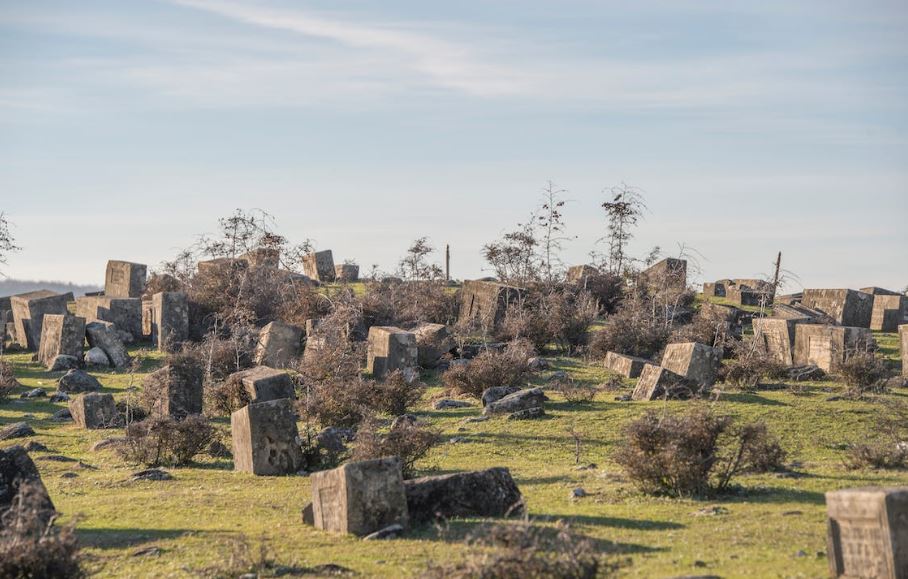Cemeteries have been around for thousands of years. Intricate tombs and burial sites were built in ancient civilizations, such as Egypt and Rome, in honor of the deceased. Additionally, in some societies, it was believed that a proper burial was essential to ensure safe passage to the afterlife. However, burial practices changed as societies evolved. Hence, during the Middle Ages, graveyards became common in many European towns and across the globe. They were often used for both burials and religious ceremonies, since churches and other religious buildings were often nearby these cemeteries.
Graveyards are places where the dead are put to rest. They are frequently regarded as sacred sites and serve as places of remembering and grieving. Moreover, this has been a significant aspect of many cultures and religions throughout history, and they continue to be an important part of modern society. Nonetheless, not all graves are taken care of, and some end up abandoned.
There are abandoned cemeteries throughout the world, and their lack of maintenance can have a number of negative effects. In some cases, the gravesites and markings may become overgrown with plants, making it hard or impossible to find individual graves. On the other hand, vandalism and theft may cause grave markers to be stolen or destroyed. Over time, abandoned cemeteries can be ignored and lost to history; the memories of those who were buried there may diminish along with the cemetery itself.
What Happens to an Abandoned Cemetery?
Cemetery abandonment may appear like a liability; however, it is possible to repurpose them and make them useful community resources.
For example, some abandoned cemeteries have been transformed into public parks or nature reserves. Others have been repurposed into historical sites that provide tours and educational activities. Furthermore, many of them have been turned into private event spaces, such as wedding venues or outdoor concert venues. An abandoned cemetery or graveyard can become something absolutely unique with a little imagination.
When cemeteries are redeveloped or repurposed, efforts are made to find the deceased’s relatives and notify the city where the cemetery will be relocated. Hence, the bodies are then moved to another cemetery. Any unclaimed remains are often moved to a single cemetery for reburial. The local government and newspapers are also informed so that people searching for their loved ones’ graves in the future will know where the graves have been moved.
Why Does A Cemetery Become Abandoned?
Cemeteries that have been left empty are sad reminders of neglect and loss, but they are more common than you might think. Here are the following possible reasons as to why cemeteries get abandoned:
- Financial difficulties – this can be a common reason why cemeteries become abandoned. Graveyard maintenance can accumulate an expensive bill between landscaping, groundskeeping, and fixing or replacing the gravestones and markers. Additionally, a cemetery may be abandoned if the community or group responsible for its upkeep goes bankrupt or stops managing it. This is especially true for lesser-known or privately-owned cemeteries, which may lack the financial means to maintain the area.
- Poor maintenance – If a cemetery is not properly maintained, plants can take over the grounds, headstones and markers, leading to its damage or loss. Consequently, this can make it challenging for family members to visit and care for the graves of their loved ones, and it can also give the community a feeling of neglect and abandonment. Therefore, if the cemetery’s owners or caretakers are unable or unwilling to do the required maintenance, the cemetery could end up being abandoned.
- Natural disasters – Storms, hurricanes, tornadoes, earthquakes, wildfires, and other natural disasters can damage cemeteries. When these things happen, they can greatly damage the cemetery’s structures and grounds. Additionally, headstones, markers, and other grave decorations can also be lost or broken. Hence, the cost of fixing the damage caused by natural disasters can be too high for some cemeteries, especially smaller or privately-owned ones that may need more resources to do such repairs. Because of this, some graves are abandoned after an unfortunate disaster.
- Negative History – A cemetery may develop a bad reputation if it is associated with a negative history – such as a tragic or traumatic event. This negative association can discourage people from going to the graveyard and maintaining it, which might eventually cause it to be abandoned. Furthermore, a cemetery with a bad reputation or history may eventually be left empty, especially if there are no clear plans or resources to address the issues.
- Development – Development is another reason why cemeteries may become abandoned. As cities and towns grow and expand, cemeteries may be affected, making them less accessible or attractive to visitors. Similarly, a cemetery in a more developed area, like a commercial or residential neighborhood, may lose its appeal and be difficult to maintain. Sometimes, development can lead to cemeteries being moved or relocated, contributing to their abandonment. In some cases, if a cemetery is on valuable land, pressure to sell or repurpose the land may lead to neglect or abandonment of the cemetery.
Conclusion
Abandoned cemeteries can significantly impact communities and their cultural heritage. Also, the reasons for their abandonment are varied; whether it is due to financial issues, natural disasters, or development, the ultimate fate of an abandoned cemetery is often uncertain. However, there are efforts to preserve and protect these sacred sites for future generations. When some cemeteries are redeveloped for public use – such as parks, the bodies are often moved to another cemetery. Despite the challenges and difficulties that come with the abandonment of cemeteries, it is important to remember and honor those who came before us, and to preserve their memories and legacies for future generations to come. Furthermore, by understanding the causes and consequences of cemetery abandonment, we can work towards finding solutions that balance the need for development with the need to honor and respect the memories of those buried in these sites.



